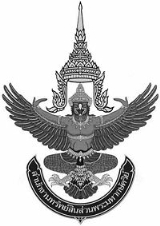
Bureau of the Crown Property
Encyclopedia
Background
The Crown Property Bureau was established under the Royal Assets Structuring Act of 1936 and became a juristic person in 1948. According to the Act, a Crown Property Board was set up, to be chaired ex officio by the Finance Minister, and served by at least four royally-appointed directors. His Majesty the King would also name one of the board members the director-general of the Crown Property Bureau. The Board of Crown Property is responsible for the overall supervision of the activities of the Crown Property Bureau. Duties and responsibilities of the director-general are prescribed by the Board of Crown Property.Initially, the Crown Property Bureau was under the jurisdiction of the Royal Treasury of the Royal Household Bureau. On 21 April 1935, the 1934 act to exempt royal assets from taxation took effect. The act categorized the royal assets into two types:
1 Assets eligible for tax exemption
2 Assets eligible for tax payment
On 19 July 1937, the Royal Assets Structuring Act of 1936 became effective. It separated the royal assets into “His Majesty’s personal assets”, “crown property” and “public property”. “His Majesty’s personal assets” would be managed by the Finance Ministry. The Crown Property Bureau was set up with the status equivalent to a division under the Treasury Department of the Finance Ministry. Some of the functions, responsibilities and officials were transferred from the Office of the Privy Purse to the Crown Property Bureau which sought permission to locate its office on the premises of the Office of the Privy Purse in the grounds of the Grand Palace.
The Royal Assets Structuring Act has been amended twice: the second amendment (1941) was promulgated on 7 October 1941 and the third amendment (1948) was promulgated on 18 February 1948. The Crown Property Bureau’s status was then elevated to a juristic person responsible for supervising, preserving and managing the crown property. The director-general of the Crown Property Bureau is authorized to affix his signature on behalf of the Crown Property Bureau. The Crown Property Bureau has moved its office four times. The Ladawan Palace, commonly referred to as the“Red Palace” has been home to the Crown Property Bureau since 18 July 1946. Every 18th day of February is regarded as the anniversary of the Crown Property Bureau’s establishment.
Mission
The Crown Property Bureau is responsible for protecting and managing the royal assets and property as well as supporting other activities for the benefit of Thai subjects and society.Policy Thrust and People
The CPB is one of organization that has been focused on personnel development for its organizational strength. For an organization to survive and be successful it must requires a highly motivated,dedicated and professional team to adapt in changing environment . As a result, the CPB realizes that its personnel must remain fully alert about changes in conditions that occur in their fields of responsibility. Moreover, the CPB seeks to establish a 'learning organization' atmosphere that will set a standard of excellence for the CPB under both national and international media attention, it causes its staffs become more aware about the social implications of their actions.Real Estate Management
To meet the tenants’ satisfaction the CPB has been improved service for all tenants. The CPB has been renewed lease contract for its tenants every three years for rent rationalization and planned for site development which will be consistent with long-term town planning considerations.Moreover, the CPB has a measurement to assist tenants those who affected by floods and political unrest by rental fee reduction.Sustainable Development
The CPB has chosen to make long-term investment in selected core business institutions such as the Siam Cement Group (SCG),the largest Thai industrial conglomerate and the Siam Commercial Bank (SCB), Thailand's first commercial bank.Both the SCB and the SCG adhered to the policy of focusing on core businesses that offer security,effective operations,sound risk management and transparency as well as responsibility towards their employees,the public,society and the environment in accordance with good corporate governance and corporate social responsibility (CSR)practices.
Diverse CSR activities
The CPB has been able to expand its diversified social projects such as temple restorations,rice research and development with the Rice Department of the Ministry of Agriculture and Cooperatives.Within this deversity, the "youth development" is promoted with CPB allies at the SCB and the SCG.The projects have been aimed at supporting the Ministry of Education for inculcating His Majesty the King's Sufficiency Economy Philosophy in the Thai school system, the establishment of the Nitasrattanakosin Exhibition Hall on Ratchadamnoen Road for Thai youngsters to learn ,appreciate and take pride in Thailand's artistic and cultural legacies of the Rattanakosin Era. Besides, the CPB has been supported numerous other projects such as scholarships contributing for Thai youths.
the CPB looks forward to further expanding its role in this regard as well as improving its effectiveness in selecting and carrying out these social projects with its partners and allies.[1].
Community Development
the CPB accepted that sustaining community improvements required parthership and cooperation among many parties. Most of all it requires empowerment of the community leaders and volunteers to help solve their own problems such as drug abuse and exploitative tendencies by some community members. Community empowerment is key function of the CPB to enhanced physical well-being, better life security and happiness in community of its land .[2]Conservation of Heritage Buildings and Sites
the CPB has been realized on the "Heritage Buildings" and "Heritage Sites". The conservation development is its policy to conserve those valuable buildings on its land. Beside, the CPB jointed BMA to develop the land near Chao Praya River to be the new magnificent public park surrounding historical buildings called Nagaraphirom Park .[3]External links
- Bureau of the Crown Property official website (Thai); (English) - Official website

